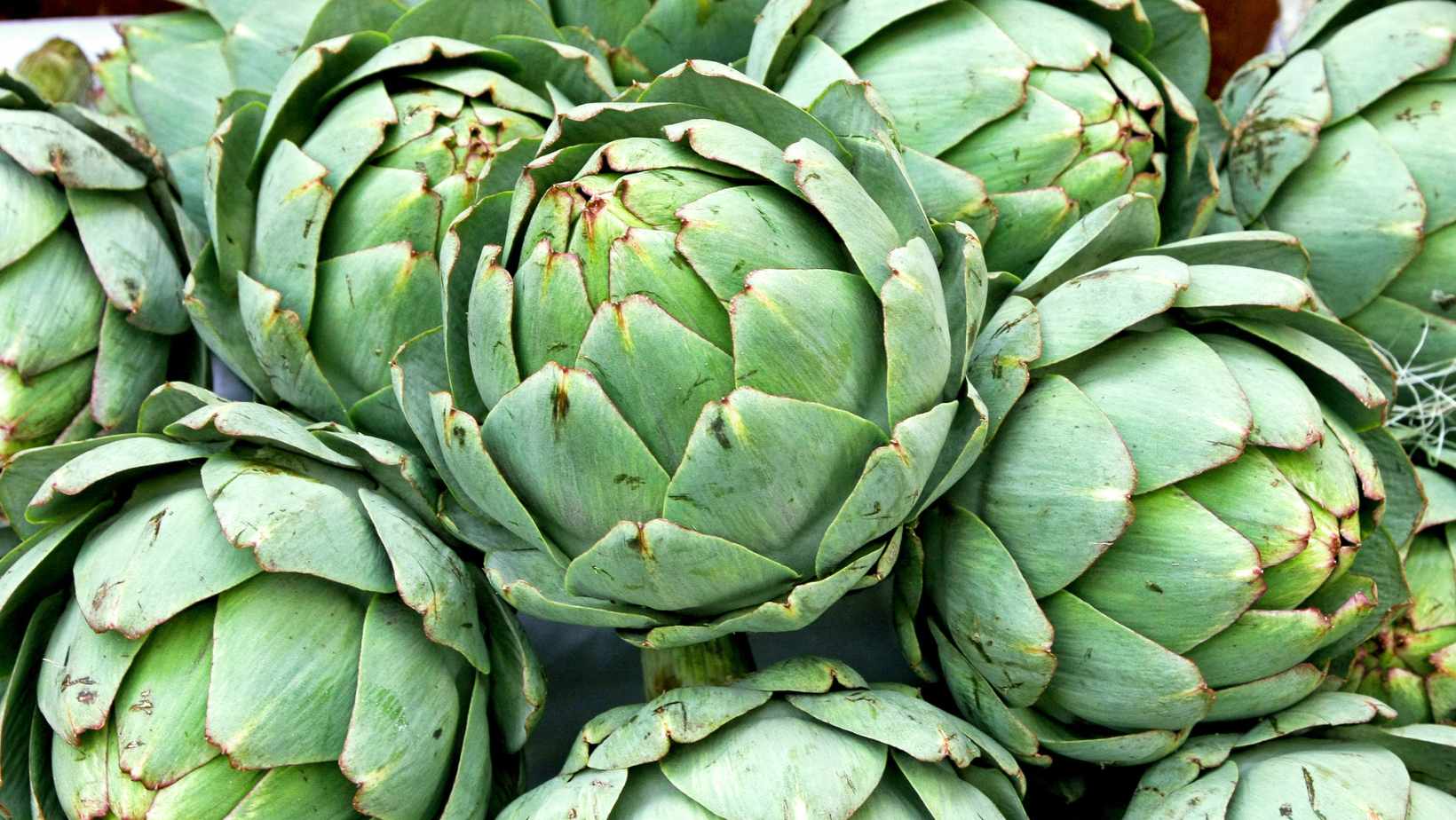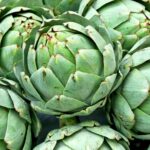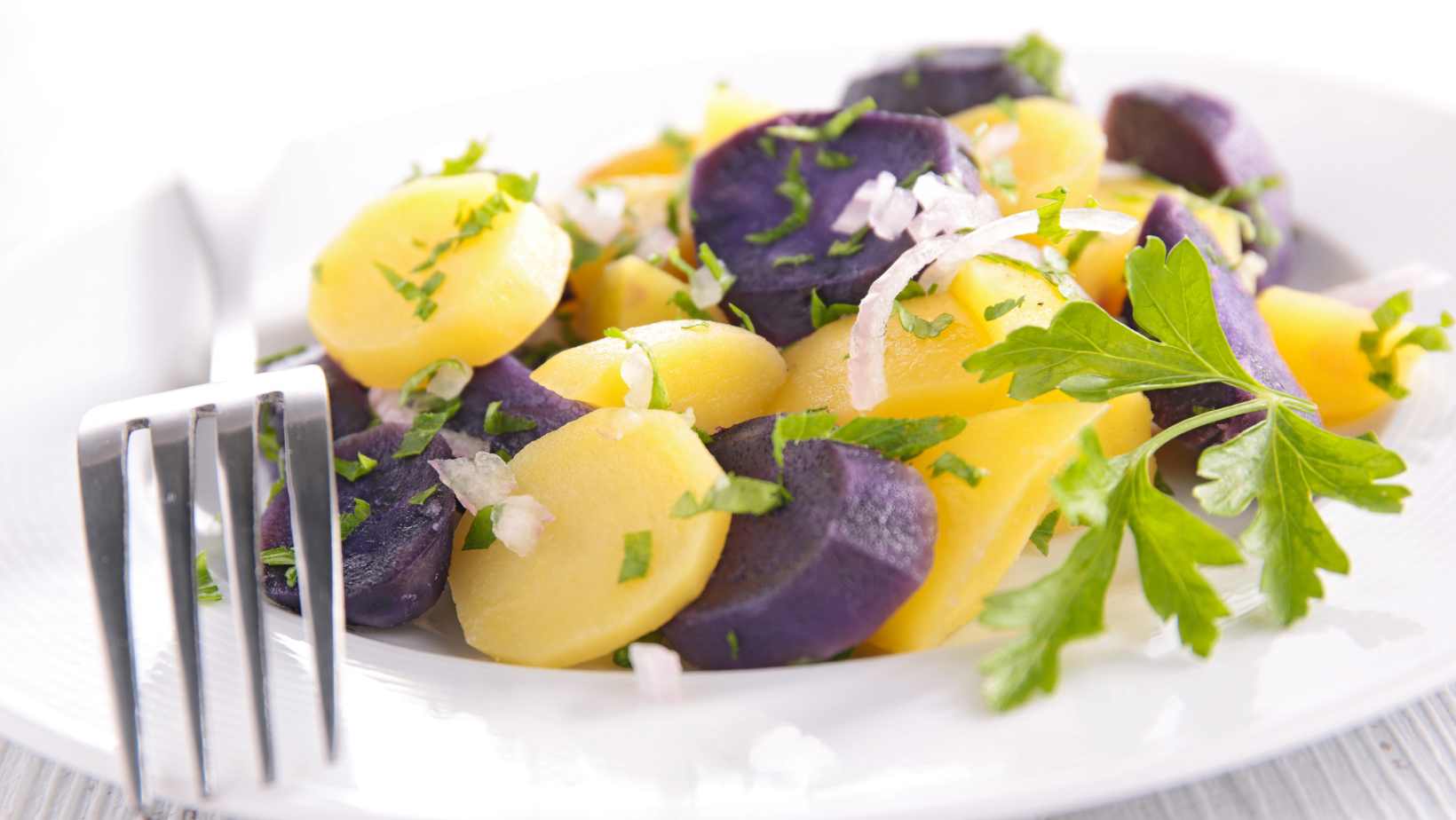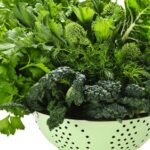Artichokes are a nutritious vegetable that is not only delicious but also healthy. To ensure selecting the freshest artichokes, follow these tips:
- Look for tightly packed leaves and firm stalks.
- Choose artichokes that feel heavy for their size.
- Check the color of the artichoke; it should be deep green with no brown spots.
- Avoid any slimy or moldy spots on the artichoke.
- Press gently on the bottom to make sure it’s not too soft or spongy.
- If possible, select locally grown artichokes for maximum freshness.
It’s important to store your artichokes properly to keep them fresh and flavorful for longer. Artichokes can be stored in the fridge for up to a week if placed in an airtight container or plastic bag with a damp paper towel. Alternatively, you can trim off the stem and place them in water as one would flowers. Just make sure to change the water every day.
A helpful tip is squeezing lemon juice over any exposed areas of your trimmed artichoke to prevent browning. This will also add a subtle citrus flavor when you cook them.
Finding the perfect artichoke is like finding a needle in a haystack, except the needle is a delicious vegetable and the haystack is a pile of mediocre produce.
Choosing The Right Artichokes
To choose the tastiest artichokes, you need to actively inspect them and consider factors like freshness and ripeness. In order to master the art of selecting artichokes in the grocery store, this section “Choosing the Right Artichokes” with sub-sections “Examining the Artichoke, Identifying Freshness, and Knowing Ripeness” is just what you need.
Examining The Artichoke
To effectively select the perfect artichoke for your recipe, you must scrutinize it closely to ensure that it is fresh and ripe. The art of examining the artichokes lies in mastering how to identify the ideal size, texture, color, and weight.
| Characteristics | Details |
| Size | Select medium-sized artichokes (2-4 inches in diameter) with tightly wrapped leaves. |
| Texture | The leaves should be firm to the touch and snap when bent, while the stem should not be too dry or shriveled. |
| Colour | The skin of a ripe artichoke should have a vibrant green hue with no dark patches on its surface. |
| Weight | A heavy artichoke signifies that it has thick, fleshy leaves and a meaty heart. |
It’s essential not to overlook these critical details as they could impact the overall quality of your dish. Artichokes are a versatile vegetable that can be baked, grilled, boiled, or roasted, but choosing the wrong one could leave you with poor results. Did you know that each year Castroville, California hosts an Artichoke Festival where visitors can taste unique artichoke-based dishes? Finding fresh artichokes is like finding a good man – firm, tight, and with no wilted leaves.
Identifying Freshness
Freshness Analysis of Artichokes
To ensure that your artichokes are fresh, there are various criteria to follow:
- Look for artichokes with green or purple leaves and closed tips.
- Choose heavy artichokes, as they contain more meat than lighter ones.
- Squeeze the artichoke gently and observe if the sound is like vegetation or crunches. The latter indicates dryness and staleness.
- Inspect the stem of the artichoke – a freshly cut stem should be bright green. If it is brown or wilted, it is not fresh.
- Avoid any blemishes on its surface – bruises may be inherent in rough handling during transportation.
- Compare different types as baby artichokes tend to have a longer shelf life than globe-shaped varieties.
It is important to note that steaming provides an accurate assessment of freshness because their leaves will slowly open after adding water.
Interestingly, freshness heavily impacts on the taste of artichokes. One time at a restaurant I had forgotten how poor-quality canned versions are compared to fresh ones. It was unpleasant when I took my first bite—the texture was mushy and tough, with a smelly taste. A complete letdown!
Finding a ripe artichoke is like finding a needle in a haystack, except the needle won’t make your taste buds sing with joy.
Knowing Ripeness
The Art of Choosing Perfectly Ripe Artichokes
Artichokes can be daunting to select, but mastering the art of selecting perfectly ripe ones is easy with a few tips:
- Look for firm and heavy globes
- Check if leaves are tightly packed with minimal spreading or gaping
- Inspect the color of the leaves, which should have a fresh greenness
- Squeeze the base; it should squeak when pinched
- Determine freshness by snapping off an outer leaf; if it snaps cleanly, your artichoke is fresh.
When choosing artichokes, consider not only their ripeness but also how they will complement your dish. Different varieties have varying purposes when cooking.
Finally, for optimal taste and texture – store in cool water, preferably submerged upside down. This ensures that the moisture reaches all parts of the vegetable resulting in its flavorful taste. Keep your artichokes fresh by storing them in the fridge, because nothing ruins a good artichoke like a soggy, sad, wilted mess.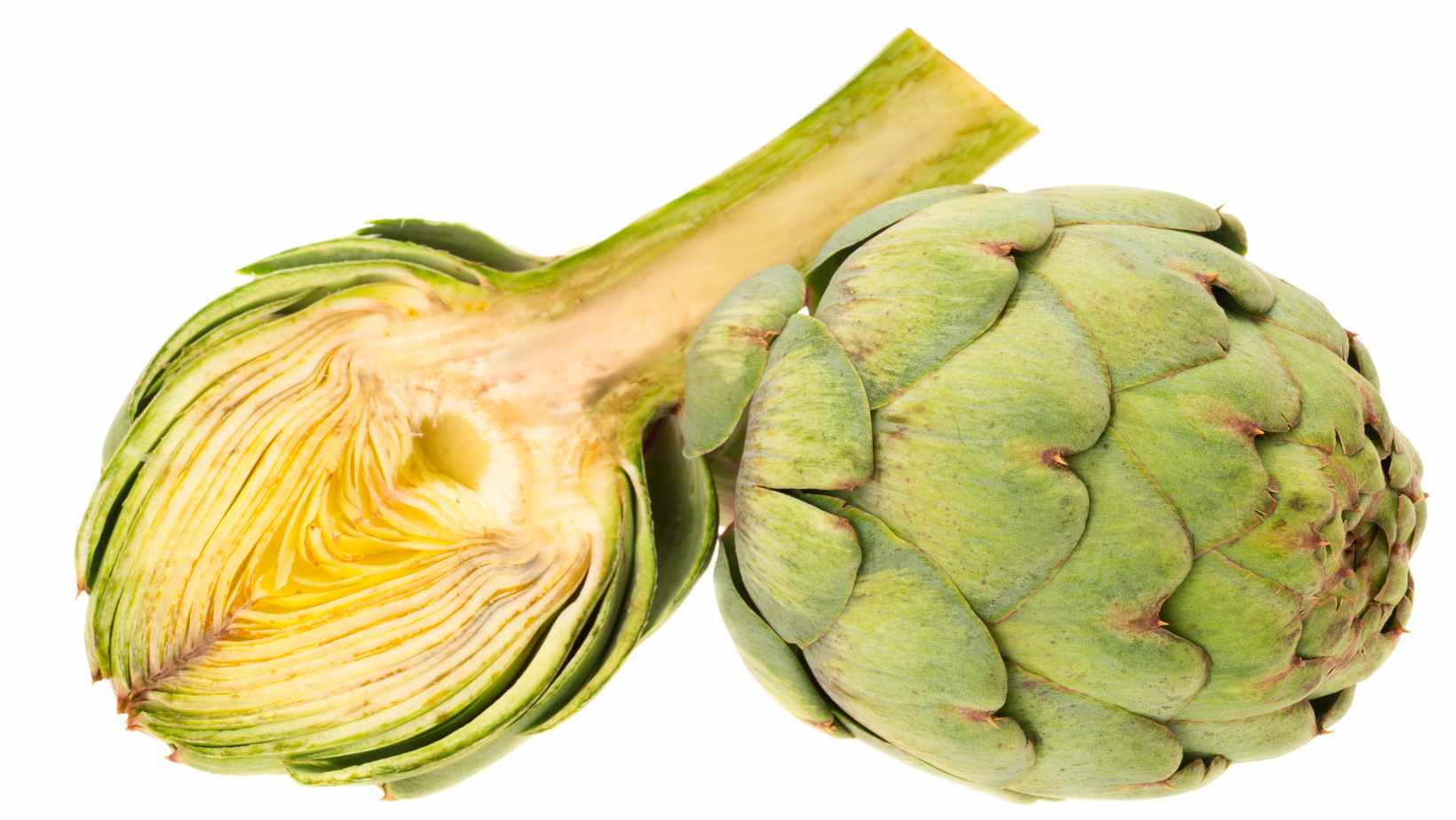
How to Store Artichokes
To store artichokes properly, you need to know about the different methods available. Refrigeration, freezing, and canning are the most effective solutions. These sub-sections will offer you a concise insight into each method so you can determine the best option for your needs.
Refrigeration
Maintaining Optimal Temperature for Artichokes
Artichokes are best stored at a consistent and cool temperature to maintain their freshness and quality. For optimal results, it is recommended to keep them in refrigeration.
Below is a table that highlights the appropriate storage conditions for artichokes in refrigeration:
| Temperature | Humidity Level | Shelf Life |
| 32-34°F | 95-100% | Up to 2 weeks |
It is important to note that artichokes should be kept away from ethylene-producing fruits such as apples and bananas as this may cause spoilage.
To further extend the shelf life of artichokes, it is advisable to store them in an airtight container or plastic wrap. Wash them only when ready to use.
Pro Tip: To check the freshness of an artichoke, look for tightly closed leaves with a healthy green color.
Want to keep your artichokes fresh? Freeze them until they’re just as cold and lifeless as your ex’s heart.
Freezing
Preservation:
- Clean and prepare artichokes by washing, trimming off stem and cutting away any tough leaves.
- Blanch artichokes in boiling water for 5-7 minutes.
- Shock them in cold water, drain excess moisture and pat dry with paper towels.
- Place the artichokes in an airtight freezer bag or container with minimal headspace to avoid ice crystals formation.
- Label and date the bags or containers before storing in the freezer.
When freezing artichokes, be sure to seal them tightly as they tend to absorb the odors of other food products.
Pro Tip: After cleaning the artichokes, cut them into desired sizes before blanching for easier portion control when consuming later.
Preserve your veggies in a can like a time capsule, but without the disappointment when you open it years later and find nothing but mushy artichokes.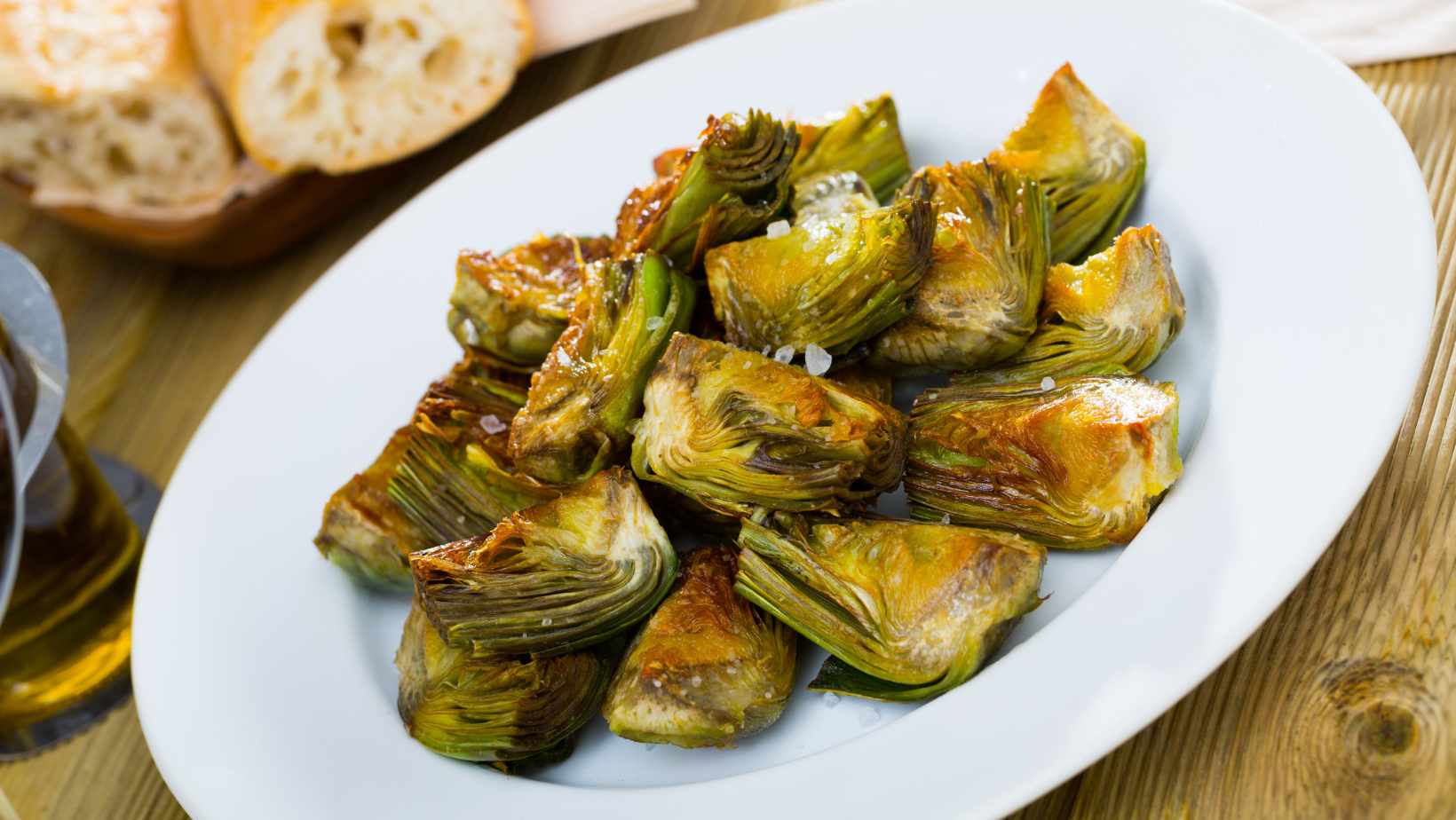
Canning
For the preservation of food, canning is a well-known process that seals and heats the container to destroy microorganisms. By sealing food in cans or jars, it can last for months without spoiling. This method makes it a convenient choice for regularly consumed produce.
Below is a table that summarizes how to can artichokes:
| Artichoke size | Time | Pressure |
| Small | 25 | 11 |
| Medium | 30 | 11 |
| Large | 35 | 11 |
When canning artichokes, choosing the right-sized jars will ensure efficient packing and could prevent spoilage. The following are specific details on processing and sterilizing steps when preparing artichokes for canning.
To help store artichokes longer, here are some suggestions:
- Using proper sized jars will help pack the artichokes tightly.
- When storing canned artichokes, keep them in a cool and dry place to extend their shelf life.
- Before opening your canned artichokes make sure you inspect them first; if there is any leakage or bulging this may indicate they’re spoiled.

